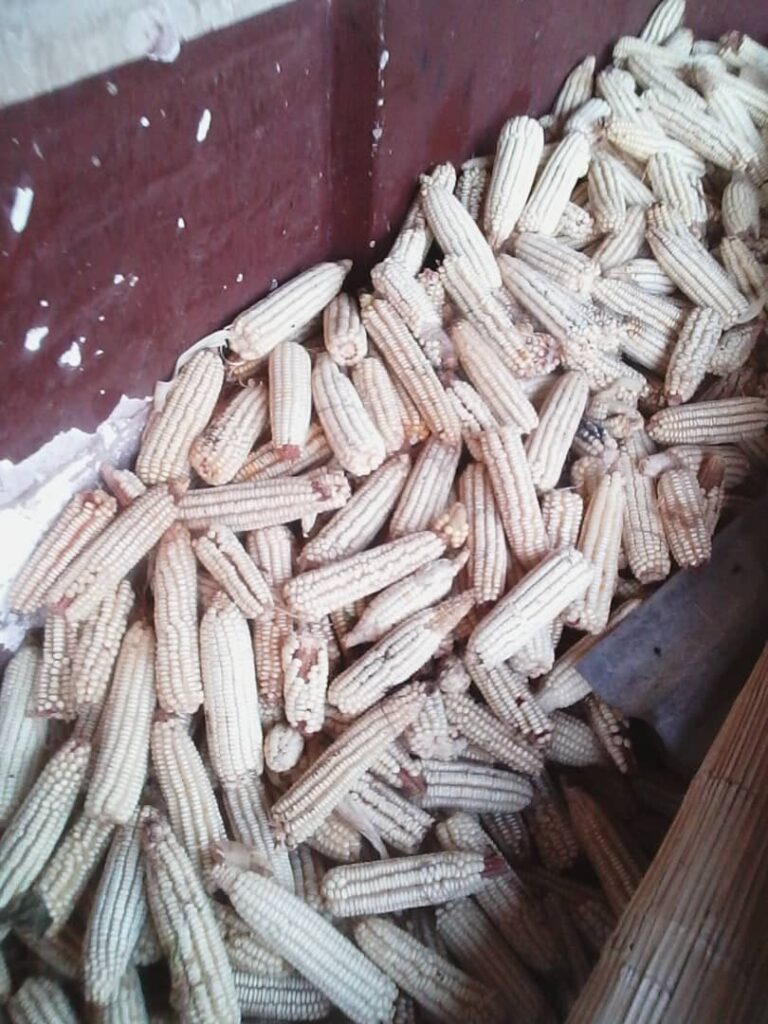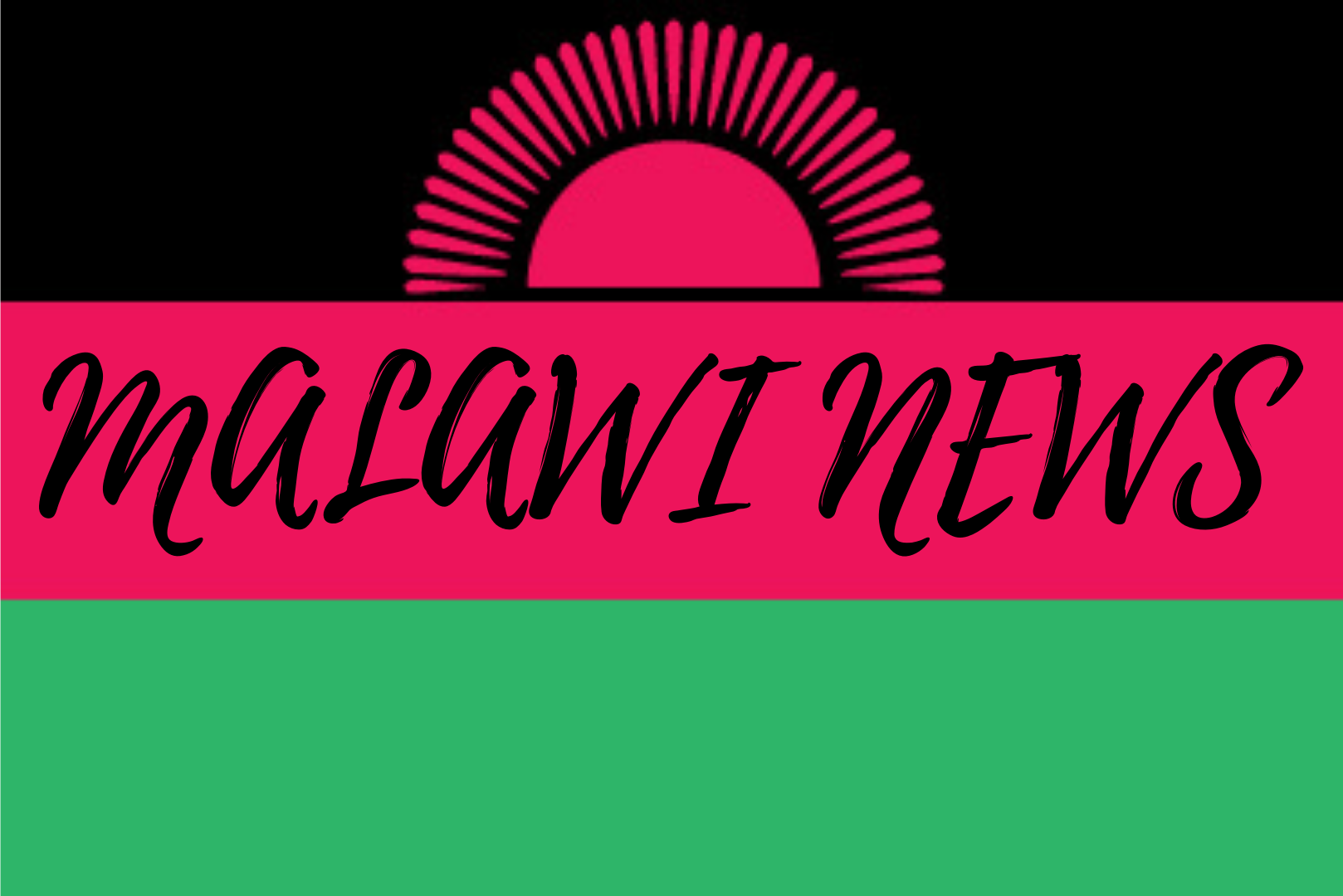MAIZE FARMING IN THYOLO, BVUMBWE
ULIMI WA CHIMANGA M’BOMA LA THYOLO, BVUMBWE
ブンブエエリアは、キャベツ、ニンジン、玉ねぎ、トマトなどの新鮮な農産物の生産地の一つ
Bvumbwe area is one of the leading producers of fresh agricultural products such as cabbage, carrots, onions, tomatoes and many more.
Bvumbwe ndi dera limodzi mwa madera omwe akutsogola pa ulimi wa mbewu za’mdimba monga kabitchi, Karoti, anyezi , tomato ndi zina zambiri.
紅茶農園の好むその地形と気候にも関わらず、多くの農家がメイズも生産しており、メイズは収穫後にシマ(マラウイ人の主食)として調理される粉へ処理される。小世帯農家を含む多くの農家が、11月から1月初めの期間となる年に1度の田植えの時期にメイズを育てている。一方、他の農家には水稲を使用して灌漑によって年中メイズを育てたり、プラスチックの鉢植えを使うこともある。
Despite its topography and climate that favours tea plantation, many farmers also grow maize which is later processed into flour used to prepare Nsima (Malawian’s staple food). Many of the farmers including those operating at small-household farming level grow maize during the annual planting season ranging from November to early January while others grow maize throughout the year by irrigating using water canes and plastic basins in some other cases.
Mosatengera mitunda ndi nyengo ya mderali yomwe imakomera ulimi wa tiyi, Alimi ambiri amapanga ulimi wa chimanga chomwe pamapeto pake amagayisa ndikupanga ufa wophikira nsima.
Alimi ambiri kuphatikizapo iwo omwe ndiwochepekedwa amabzala chimanga munyengo yachilimwe yomwe imayamba mmwezi wa Novembala mpaka kumayambiriro a mwezi wa Januwale pomwe alimi ena amabzala chimangachi pogwiritsa ntchito ulimi wa mnthirira omwe amagwiritsa ntchito ma wota keni komanso zidebe zotungira madzi.
農地準備
PREPARATION OF FARMS
KUSOSA MMINDA
マリカ村(同じブンブエ地区に位置)では、農家は10月と11月の初めの間に雨季に備えた田植えのために農地の準備をする。新しく改善された農法が農家に広まるまで、古くから農家は焼き畑をしてから畑を耕してきていた(耕稼)。新しい農法によって、焼き畑と耕稼をすたれていき、ゼロ耕稼収穫システムを使用するようになる。今や多くの農家が田植え場を作り、たい肥(地元の畜産農場から入手できる)である家畜の糞でいっぱいにし、田植え時期の間に田植え場を作るようにしている農家もいる。
In Malika village (located in the same area of Traditional Authority Bvumbwe), farmers prepare their fields for planting in between October and early November in readiness for the first soaking rains. Since time immemorial farmers have been burning vegetation and tilling the soil till recently when new and improved farming methods were extended to farmers. These methods discourage them from burning vegetation and tilling the soil but rather use no-till/zero tillage cropping system. Now many farmers make planting stations and fill them with cattle dung as manure (that is readily available from dairy farmers within the local setting) and others prefer making planting stations during the time of planting.
Mmudzi wa Malika omwe umapezeka mudera la a T/A Bvumbwe, alimi amakonza minda yawo mu Okotobala komanso kumayambiriro a mwezi wa Novembala kukonzekera kubzala timalupsa tikagwa.
Kuyambira kale alimi akhala akutentha tchire komanso kutipula mnthaka mpaka posakhalisapa pomwe alimi adaphunzisidwa njira zamakono zodalirika za ulimi.
Njirazi sizimalola alimi kutentha tchire komanso kutipula mnthaka komano kugwiritsa ntchito njira ya mntaya khasu.
Pakadali pano alimi ambiri amangokumba mapando ndikuyikamo manyowa andowe za ng’ombe (chifukwa ndi opezekeratu kwa alimi ang’ombe za mkaka mderali) . Alimi ena amakumba mapandowa panthawi yobzala.
生産原料の取得
PROCUREMENT OF FARM INPUTS
KUGULIDWE KA ZIPANGIZO ZA ULIMI
ブンブエ調査場を通じて政府が努力し、現地の各世帯への訪問員が農家へハイブリッド・メイズの種の利用を推進しているが、色々問題があって、多くの農家がンゴニ族やロームウェ族の間でロコロやムワリワとして広く知られている、現地のメイズを育てている。これは現地での信仰と代々伝わる慣習によるものである。現地の種は前年の収穫から得られている。ハイブリッド・メイズと肥料は、AIP(Affordable Inputs program)としてマラウイ政府の補助金制度を通して手に入れ、現地の農業原料業者から購入する者もいる。
Governments efforts through Bvumbwe Research station and local extension services is underway to encourage farmers to use hybrid maize seeds but in a twist of events, many local farmers grow local maize which is popularly known as Lokolo or Mwaliwa among the local Ngoni and Lhomwe inhabitants. This practice is fueled by local beliefs and generation to generation’s recommendations. The local seeds are obtained from the previous year’s harvest. Hybrid maize seeds and fertilizers are obtained through Malawi Government subsidy programs such as the AIP(Affordable Inputs program) while some buy them from local agricultural inputs dealers
Boma kudzera ku bungwe lopanga zakafukufuku wa ulimi mderali komanso alangiza lili pakalikiliki kulimbikisa alimi kuti azigwiritsa mbewu za chimanga zamakono.
Koma ngakhale izi zili choncho alimi ambiri akumabzalabe mbewu ya lokolo (mwaliwa).
Izi zili chomwechi chifukwa cha zikhulupiliro pakati pa Angoni ndi Alhomwe omwe amakhala mderali.
Mbewu ya lokolo imapezedwa kuchokera kuzokolola za mbuyo.
Mbewu ya chimanga komanso feteleza amapezedwa kudzera mu mapologamu a zipangizo za ulimi zosika mtengo aboma monga AIP (affordable inputs program) pamene alimi ena amagula kwa anthu omwe amachita malonda azipangizo za ulimi mderali.
メイズの種まき
PLANTING OF MAIZE
KUBZALA CHIMANGA
チカパ村とその周りの村では(同じくブンブエ地区)、農家は雨季の最初の雨が降った後にメイズの種をまく。多くの農家が、90cm×90cm×90cmで計算される田植え場ごとに3つのメイズの種を育てる。この間隔の取り方は、感覚と過去の経験を通して現地で決められている。一般的に高齢者がこの仕事をして、子どもたちは田植え場に種をまき、土を薄く覆っていく。マリカ村のしっかり訓練を受けた農家は、こちらも大きなメイズ収穫を得ることができるササカワ法(1場に1種)を使う者もいる。特に個人や家族レベルでの多くの農家は、1ヘクタールに満たない農地を所有しており、休閑させることなく継続して耕作している。その土地は家族の土地を引き継ぐか、コミュニティ土地所有法によって感謝のしるしとして壌土されたものになる。
In Chikapa village and some surrounding villages (The same Traditional Authority Bvumbwe area), farmers plant maize after the first soaking rainfall. Many farmers grow three maize seeds per planting station at an estimated spacing of 90cm×90cm×90cm. Locally this spacing is achieved through use of normal sense and past experience. Commonly elders are the ones who do this task while children place the seeds on the planting station and cover them with a light layer of soil. Some well-trained farmers in Malika Village use the Sasakawa method (one seed per station) which has also led to greater maize yields. Many farmers especially at individual and family level, own less than a hectare of land which they cultivate continuously without fallowing. Rottenly the land is acquired either through family land succession or given as a token of appreciation as per their communal land ownership laws.
Mmudzi wa Chikapa mdera lomweli, Alimi amabzala chimanga ndi timalupsa. Alimi ambiri amabzala chimanga chitatu pa phando lililonse mu utali wa 90cm × 90cm × 90cm. Utali wu umayezedwa pongotengera luso lomwe munthu ali nawo pantchito yi. Nthawi zambiri akulu akulu ndi iwo amakumba mapandowa pamene ana amakhala akuponya ndikukwirira mbewu. Alimi ena ozisata a mmudzi wa Malika amagwiritsa ntchito njira ya sasakawa yomwe amabzala chimanga chimodzi pa phando lililonse. Njirayi yasonyeza kuti imabweresa zokolola zochuluka.
Alimi ambiri amakhala ndi munda wosakwana ngakhale hekitala limodzi pomwe amalimapo mwakawirikawiri osasiya kuti mnthaka ipume.
Nthawi zambiri umwini wa mindayi umapezedwa kupyolera mu malamulo a minda omwe amasogolera amfumu komanso ena amachita kupasidwa.
雑草駆除と肥料使用
WEEDING AND FERTILISER APPLICATION
KUPALIRA NDI KUTHIRA FETELEZA
この地域では、雑草駆除は鋤を使用して手で行われており、手を使うこともある。肥料を使用する時、メイズの植えた場所の片方に穴が開け、素手かボトルの蓋を使って肥料が蒔かれる。穴は小さい木の枝とモップの柄から即席で作られた棒を使用して開けられる。これはメイズが芽を出して、膝の高さまで育った時に行われる。尿素、カルシウムアンモニア硝酸塩、窒素リンカリウムが使用される無機肥料の例となる。
農園の雑草の中には、シマのおかずとして使用されるものもある。雑草にはブラックジャックの葉(チソソ)も含まれ、自然とオクラ(テレレ・ラ・デンジェ)なども生る。耕作期にメイズと一緒にかぼちゃを育てている人たちは、かぼちゃの葉も採って、ンクワニと呼ばれるおかずに使用される。大抵これらはピーナツの粉と一緒に調理される。チソソとピーナツの粉を調理すると、そのおかずはンクワニ・オテンデラと呼ばれる。このようなおいしい料理は、炭水化物、ビタミン、消化を助ける食物繊維を多く含む。これらの摂取は下痢を防ぐが、摂りすぎると便秘を引き起こす。
In the area, weeding is done manually by use of hoes and in some cases by use of hands. During fertilizer application, a hole is made on side of the maize plant and fertilizer is placed using bare hands or bottle caps. The holes are made using jobbing sticks improvised from small tree branches and mops handle sticks. This is done when the maize plant has germinated and when the plants are knee high. UREA, CAN (Calcium ammonium nitrate) and NPK are some of the common inorganic fertilizer used.
Some weeds from the farm are commonly used as relish which is served together with Nsima. The weeds include blackjack leaves (Chisoso), naturally grown okra (therere la denje) etc. To some who grow pumpkins together with maize during the planting season, they also pluck pumpkin leaves to be used as relish called Nkhwani. Most of the times these dishes are prepared with groundnuts flour. When chisoso is prepared with groundnuts flour the relish is called Chisoso chotendera and when pumpkin leaves are prepared with groundnuts flour the relish is called Nkhwani wontendera. these are delicious dishes rich in carbohydrates, vitamins and fibers which aid in digestion process. Their consumption prevents the occurrence of diarrhea but over-consumption of them leads to constipation.
Mderali, anthu amagwiritsa ntchito makasu komanso manja popalira. Pothira feteleza bowo limabowoledwa mbali imodzi pafupi ndi chimanga ndipo feteleza amayikidwa pamenepo pogwiritsa ntchito manja kapena zisekelero zamabotolo.
Mabowo wa amapangidwa pogwiritsa ntchito ndondo zochokera ku mnthabi za mtengo zing’ono zing’ono komanso ndondo za zikolopa.
Izi zimachitika mbewu zikatuluka munthaka komanso mbewu zikafika mmawondo.
UREA, CAN (calcium ammonium nitrate) komanso NPK ndi ina mwa mitundu yafeteleza yomwe imathiridwa.
Mbewu zina zongomera zokha monga chisoso komanso therere la denje mwa zina, zimagwiritsidwa ntchito ngati ndiwo.
Kwa alimi ena omwe amadzala mawungu amagwiritsa ntchito masamba amawungunso kupanga ndiwo zotchedwa Nkhwani.
Nthawi zambiri ndiwozi amathira ufa wa mtedza. Ndipo zikatero zimatchedwa ndiwo zotendera( mwachitsanzo; Chisoso chotendera, Nkhwani wotendera)
Izi ndi ndiwo zokoma zopasa mphamvu, mavitameni komanso ma fayibazi omwe ndiofunikira mukugayika kwa chakudya.
Kudya ndiwozi kumateteza munthu ku matenda ochita chimbuzi cha madzi koma kudya kwambiri ndiwozi kumayambisa kuzimbidwa.
Kwa alimi ambiri omwe omwe samakwanisa kupeza ngakhale ndalama yochepera MK700 (seveni handede kwacha) patsiku amapezerapo mwayi pa zomerazi ngati ndiwo.
殺虫剤と病気管理
PESTs AND DISEASE CONTROL
KUTHANA NDI ZILOMBO KOMANSO MATENDA
蛾の幼虫(Stalk borer・Army worm)、バッタなどが、この地域でメイズに攻撃を与える一般的な害虫となる。このような害虫の管理には、灰と土をメイズの上に蒔き、手で取られる場合もある。手で取られた害虫は、たんぱく質を豊富に含んでおり食用に揚げられる。Carbarylのような殺虫剤を害虫駆除に使用する農家もいる。一般的に蛾の幼虫らはメイズを這って茎を弱らせ、風が強かったり激しい嵐の時には茎の中に留まる傾向がある。バッタはメイズの葉を餌としており、これによってメイズの生産工程を制限している。コブロット、糸黒穂病、コブズマットはこの地域で一般的なメイズがかかる病気である。これらはメイズの質と収穫量を下げる。しかも、農家はこの病気を殺すために更なる生産費用を負うことになる。
Stalk borers, Army worms and Grasshoppers are the common pests that attack maize in the area. In the local control of these pests, ash and soil is spread on top of the maize plant and in some cases the pests are handpicked. The handpicked pests are fried for food which is rich in protein content. Some farmers use pesticides e.g. Carbaryl to control the pests. Generally, Stalk borers and army worms bore through the Maize stalks thereby making the stem to be weak and prone to logging in times of strong winds and heavy storms. Grasshoppers feed on maize plant leaves thereby limiting the food production process in the maize plant. Cob-rot, headsmut and cobsmut are some of the common diseases that attack maize in the area; these diseases lower the quality and quantity of maize yield. In addition, farmers incur extra production costs in trying to eliminate the diseases.
Mtchembere za ndonda , akapuchi komanso zitete ndi zina za zilombo zomwe zomwe zimaononga chimanga mminda mderali.
Njira za chikuda zothana ndi mbozizi ndi monga kuthira dothi komanso phulusa kumsonga zachimanga.
Pa Nthawi zina anthu amatha kungotola ndi manja mbozizi.
Mbozi zotoredwazi zimakazingidwa ndikupanga ndiwo zomwe zomwe zimakhala zozaza ndi gulu lazakudya lokulisa.
Alimi ena amagwiritsa ntchito mankhwala ophera Mbozi popha mbozizi.
Mtchembere za ndonda komanso akapuchi amabowola phesi la mbewu la chimanga ndikulisiya pachiwopsezo chokugwa ndi mphepo ya mkutho.
Zitete nazo zimadya masamba achimanga ndipo izi zimachepesa chakudya chomwe chimanga chimapanga.
Naliwole komanso headsmut ndi ena mwa matenda omwe amagwira chimanga mderali.
Matendawa amatsisa kolite komanso mulingo wa zokolola. Kuwonjezera apo , alimi amawononganso ndalama zambiri pothana ndi Matendawa.

収穫方法
HARVESTING PROCESS
KUKOLOLA
収穫期は3月終わりから5月におよぶ。メイズは生のままと乾燥させたものと2つの形態で収穫される。生のメイズは穂がついたままで、かぼちゃと一緒に調理される。この料理はこの地域全体の低所得世帯で副菜として出される。乾燥してくすんだ葉のついた、振るとカラカラ鳴るメイズが乾燥メイズとして収穫される。メイズの茎はパンガナイフで切り取られ、山積みにされる。この山積みのメイズから脱穀される。この収穫は大抵、収穫を楽にするために、グループ内の農家ごとにそれぞれのメイズを収穫することに同意した家族世帯の協力したグループによって行われる。別の場所では、ローカルチキン(大抵位一羽か二羽)を殺して、もっと多くのシマがメイズを収穫している人々のために調理される。甘いビール(トブワとも呼ばれる)も手伝ってくれている人々にふるまわれる。収穫が終わると大酒のみにはビールが約束されている。
メイズは袋詰めされ、農家の家のンコンクウェ(現地のサイロ)に保存のために運ばれる。
The harvesting period ranges from late March to May. Maize is harvested in two forms either as fresh or dry. Fresh maize is cooked together with pumpkins while it is still attached to the cob. And this dish serves as a substitute for the staple food in some of the low-earning families across the area. Maize producing rattling sound when shaken and with dark-dry leaves is harvested as dry maize. Maize stalks are slashed with a panga knife and they are heaped on a pile. From these heaps of maize stalks, maize is threshed. This process is usually done by a united group of family households who agree to harvest their maize farm-by-farm in groups so as to make the harvesting process easier. In other circumstances local chickens (usually two or one) are slaughtered and more Nsima is cooked for the people harvesting the maize. Sweet beer (also called Thobwa) is also prepared for these helping troop. Drunkards are also assured of beer after the harvesting process.
The maize is then packed in sacks and carried to the farmer’s house for storage in Nkhonkwe(local silos).
Nyengo yokolola imayamba kumapeto kwa mwezi wa malichi mpakana mwezi wa Meyi.
Chimanga chimakololedwa ngati chowuma komanso ngati chosawuma.
Chimanga chosawuma chimaphikidwa pamodzi ndi mawungu. Ndipo ena amatha kudya mmalo mwa Nsima. Izi zimachitika kwambiri kumabanja omwe ndi osapeza bwino.
Chimanga chomwe masamba ake awuma komanso chomwe chimasokosa chikagwedezedwa chimakololedwa ngati chowuma.
Mapesi achimanga amakhapidwa ndi chikwanje ndikuwunjikidwa pamulu.
Ndipo mmiluyi ndi momwe chimachosedwa pa phesi.
Kamachita izi ndi kagulu ka anthu/mabanja omwe agwirizana kuthandizana kukolola mminda yawo kuti asawone ntchito kuwawa.
Nthawi zina Nkhuku(ziwiri kapena imodzi) zimaphedwa ndipo ndima yambiri imaphikidwadi kuti anthu okolola azipepese.
Thobwa komanso mowa zimafululidwa kuti anthu komanso zidakhwa zothandizira kukolola zitsisire.
Kenako chimanga chi chimanyamulidwa mmatumba ndikupita nawo kunyumba kokasunga mu Nkhokwe.

メイズの処理
MAIZE PROCESSING
KAKONZEDWE NDI KASAMALIDWE KA CHIMANGA
メイズは手で皮を剥かれ、通常一袋あたり500クワチャ以下が一人あたりに支払われるグループによって行われる。そのあとに米袋や床の上で一週間天日干しされ、アクテリック(殺虫剤)が蒔かれる。50キロの袋に入れられ、涼しくて乾燥した室内に保存される。化学薬品がまかれずに、焼かれて、おやつとして食べられるメイズもある。
The maize is shelled using hands and this is also commonly done by a group of people who are each paid a sum of less than MK500 (Five hundred Malawian kwacha) per one bag of maize shelled. The maize is then sun dried on sewn sacks or on the floor for a week and thereafter Actellic is applied. Shelled maize is then packed in 50 Kilograms sacks which are stored on a cool and dry place in the house. Some of the maize that is not applied chemicals is roasted and consumed as snacks.
Chimanga chimasoledwa pogwiritsa ntchito manja. Izi zimachitika ndi kagulu ka anthu komwe kamalipidwa ndalama yochepera MK500 pa thumba lililonse losoledwa.
Kenako chimabgaw chimayanikidwa pa zisaka komanso pamsi kwa tsabata Kenako chimathiridwa mankhwala.
Chimanga chothira mankhwala chimayikidwa mumatumba a 50kilogalamu ndikusungidwa pamalo opita mphepo ndi owuma.
Chimanga china China chimakazingidwa ndikudyedwa.
寄稿者
ブロガー:ニアシャ・ングルウェ
Blogger: Nyasha Nguluwe
ロイヤル・タレント・ユースの設立者でCEO
ロイヤル・タレント・ユース:
自分たちの能力を使用した国際的で明確な存在感を持って、学術的、精神的、知的な面で人間への最高のインフルエンサー、志を持つ者、モチベーターになることをビジョンとする若者による組織です
Founder and Chief executive officer at Royal Talented youths; a youth led organisation with a vision of being best influencers, aspirants and motivators to the human race in academical, spiritual and intellectual dimensions in Malawi with international visible presence by using our talents.
Contact details: +265998637912
WhatsApp: +265886765101
Email: nguluwenyasha360@gmail.com
District of origin: Mulanje (chonde)
Residential District: Thyolo (Bvumbwe)

 Moni Malawi
Moni Malawi 
